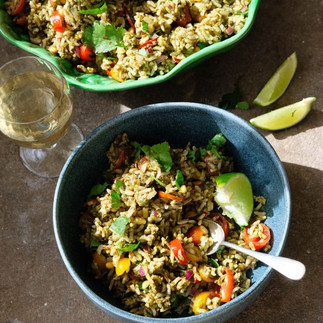Myanmar’s delicious edible fermented tea, known locally as Lahpet, has been enjoyed across the country for centuries. Lahpet is the delectable essential ingredient in the iconic national dish Lahpet Thoke, a tea leaf salad, and is aptly described by Thazin Han as 'Lord Of The Leaves'!

အသီးမှာ သရက် အသားမှာ ၀က် အရွက်မှာ လက်ဖက်္
"Of all the fruit, the mango is the best; of all the meat, the pork is the best; and of all the leaves, lahpet is the best" - Traditional Burmese Proverb
These famous tea leaves have been fermented for three months, producing a unique umami flavour.
Bursting with antioxidants Lahpet is a healthy and tasty addition to a range of dishes, but can also happily be eaten on its own as a snack.
Not just in process (see bottom of the post) but also in flavour it is unlike other fermented foods you may have eaten, including Sauerkraut or Kimchi, as well as being vegan and free from sugar, dairy and gluten.

Historically offered as a peace symbol after a dispute, Lahpet is central to Burmese life. More often than not, people looking for tea in Myanmar are searching for tea to eat rather than to drink, be that at a restaurant, street stalls, teashop, or at home.
Lahpet is also traditionally enjoyed at times of celebration. It is customary to have Lahpet as one of the courses at weddings and special ceremonies, while it is also commonly offered as a spiritual donation.
Lahpet is most commonly eaten in a salad, Lahpet Thoke, or mixed in with rice, Lahpet Thamin.
The versatile taste makes Lahpet a tasty addition to a range of dishes. Check out our recipe page for inspiration!























Comments